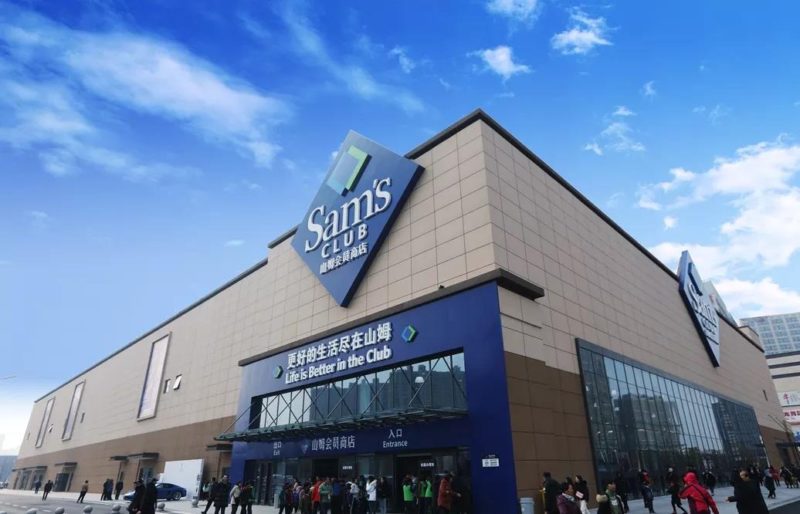Walmart in China: Market entry case study
Overview of Walmart in China
Walmart was founded in the United States by Sam Walton. It has now grown to be the largest retailer in the world with over 11,200 stores across 27 countries. Walmart entered China in 1996 with its first location in Shenzhen.
The company operates three retailing formats: Supercenters, Sam’s Club and Neighborhood Markets, all of which cater to different consumers’ needs. Supercenters mainly aim at saving consumers’ time and money. Walmart is known for “Every Day Low Prices”. Sam’s Club in China is a members-only warehouse. Walmart China has a similar business model as Costco in China, which provides low-cost, bulk products for both business and personal use. Neighborhood Market is located near residential areas, for consumers’ daily shopping needs. Walmart China currently operates more than 400 stores in over 180 Chinese cities. Of these, there are 26 Sam’s Clubs in China. It is planning to open 30 to 40 new stores every year.

[Source: linkshop.com.cn Sam’s Club in China owned by Walmart]
In 2007, Walmart spent US$1 billion and acquired 35% of the parent company of Trust-Mart, a Taiwan-based hypermarket chain plan. This major investment by Walmart accelerated its expansion across Chinese regions. As of 2012, Trust-Mart had over 100 outlets across China, including many stores in lower-tier cities.
Walmart China sold its Chinese E-commerce site (Yihaodian) to JD.com in 2016. JD.com now operates on behalf of Walmart China for its online platform, which it allows Walmart a more competitive position that taps into Chinese consumer needs.
Strategies of Walmart China
Walmart maintains the same strategy in China as it does globally, which is centered around quality service and low prices. Walmart and Sam’s Club in China use advanced retailing technologies methods. While inspiring competition, it raises the level of overall service of the local retailing industry.
Local sourcing keeps prices low
Walmart China sources locally. Local products comprise about 95% of the goods that are sold in China’s Walmart locations. Additionally, it has cooperated with about 20 thousand suppliers, and directly exports about 9 billion USD worth of Chinese products annually. In 2006, Walmart China was named the enterprise with highest customer satisfaction according to a survey held by an authority in Shanghai.
Sustainable development lowers operation costs
Sustainable development is another important strategy of Walmart China. It opened its first environmentally-friendly flagship store in Beijing in 2018 with 40% less energy usage. The store incorporated efficient cold chain system, energy saving light bulbs, and longer lifespan long-term assets etc.
Walmart began developing its online retailing services in China in 2012. Since Walmart’s Chinese stores are mainly distributed in first and second tier cities, great market potential hence lies in third tier cities and smaller cities through online retail. The development of an online purchasing system greatly increased Walmart’s awareness and popularity.

[Source: wal-martchina.com Walmart introduced its official App to encourage consumers to purchase via their App]
Walmart: secret to success
Walmart three core company principles are: Respect individuals; serve the customers; chase for excellence.
Walmart also has ten rules of operation for its employees: control the cost; make good plans to share the profits; inspire your co-workers; learn from anybody possible; thank your colleagues for their contribution to the firm; allow for failures; listen to the advice of everyone in the company; do better than what customers had expected and they will come again; make administration costs lower than your competitors; do not follow the tradition.
New moves by Walmart in China
Recently, Walmart announced its plan to open 500 new stores and warehouses in China over the next five to seven years. This movement by the company is considered to be one of its biggest footprint in China despite that the overall Chinese economy is cooling. Although that Chinese GDP growth dropped to its lowest level in nearly three decades last quarter due to trade was with the United States, the sales of Walmart in China grew by 6.3%. Notably, its growth in the Chinese market doubled more than its worldwide growth of 2.5%.
Besides, Walmart announced that it is going to invest approximately 1 billion dollars in its Chinese region to compete with local rivals and other online retailers. James Ku, senior vice president of Walmart China mentions that the company seeks to deliver freshness, value and convenience to its customer by leveraging multiple format strategies, in which remodeling of stores, and improving store features such as self-checkout machines incorporating facial recognition, as well as online platform stores will be the key to the success of the company’s expansion project. Cooperating with JD.com will also allow Walmart the chance to gain deeper Chinese consumer insights.

[Source: asia.nikkei.com Facial recognition check-out machines adopted by other retail chains]
Reaching low tier consumers
Walmart China is also planning to put more weight on its neighborhood stores and to increase the sales area of fresh groceries. Walmart will continue to expand especially in the second- and third-tier cities, with a plan to open 40-50 new outlets a year focusing on third-tier cities.
Overall, the future of Walmart China seems to be fairly optimistic as the company continues to experience revenue growth. However, the future growth will depend largely upon its expansion of local brick-mortar-stores, improvement of online platforms and relative digitized features.
Daxue Consultant China
Sources:















